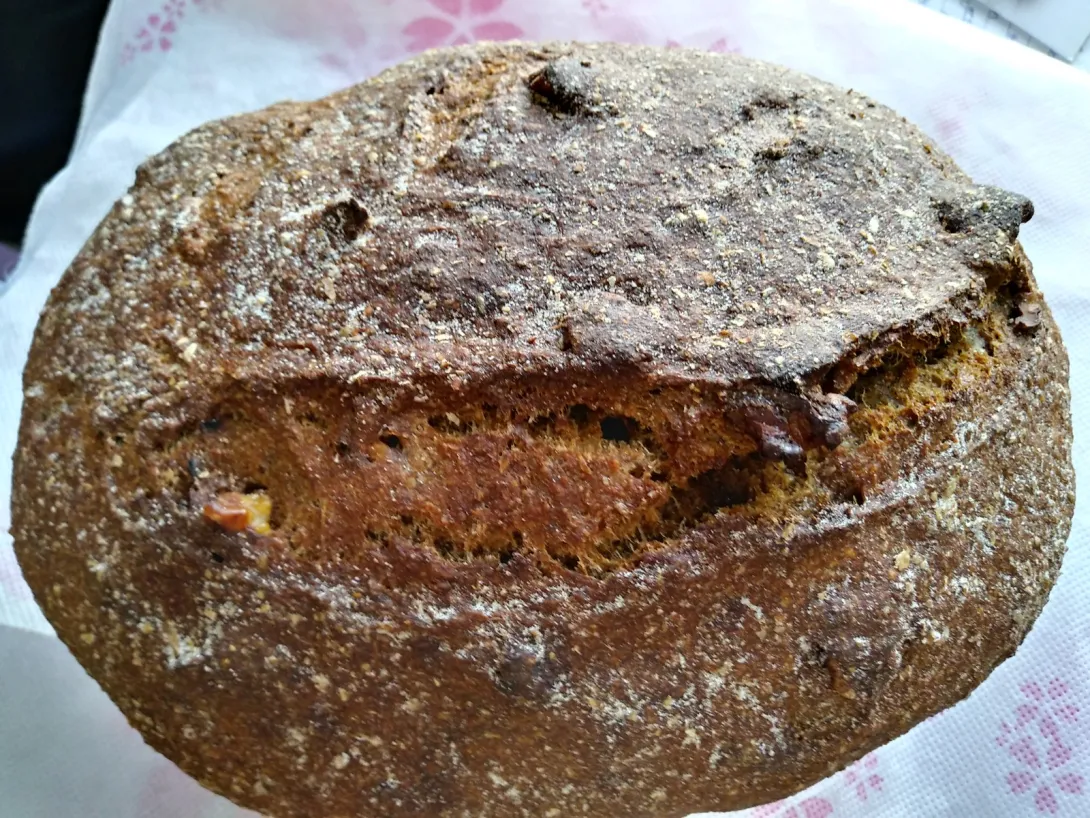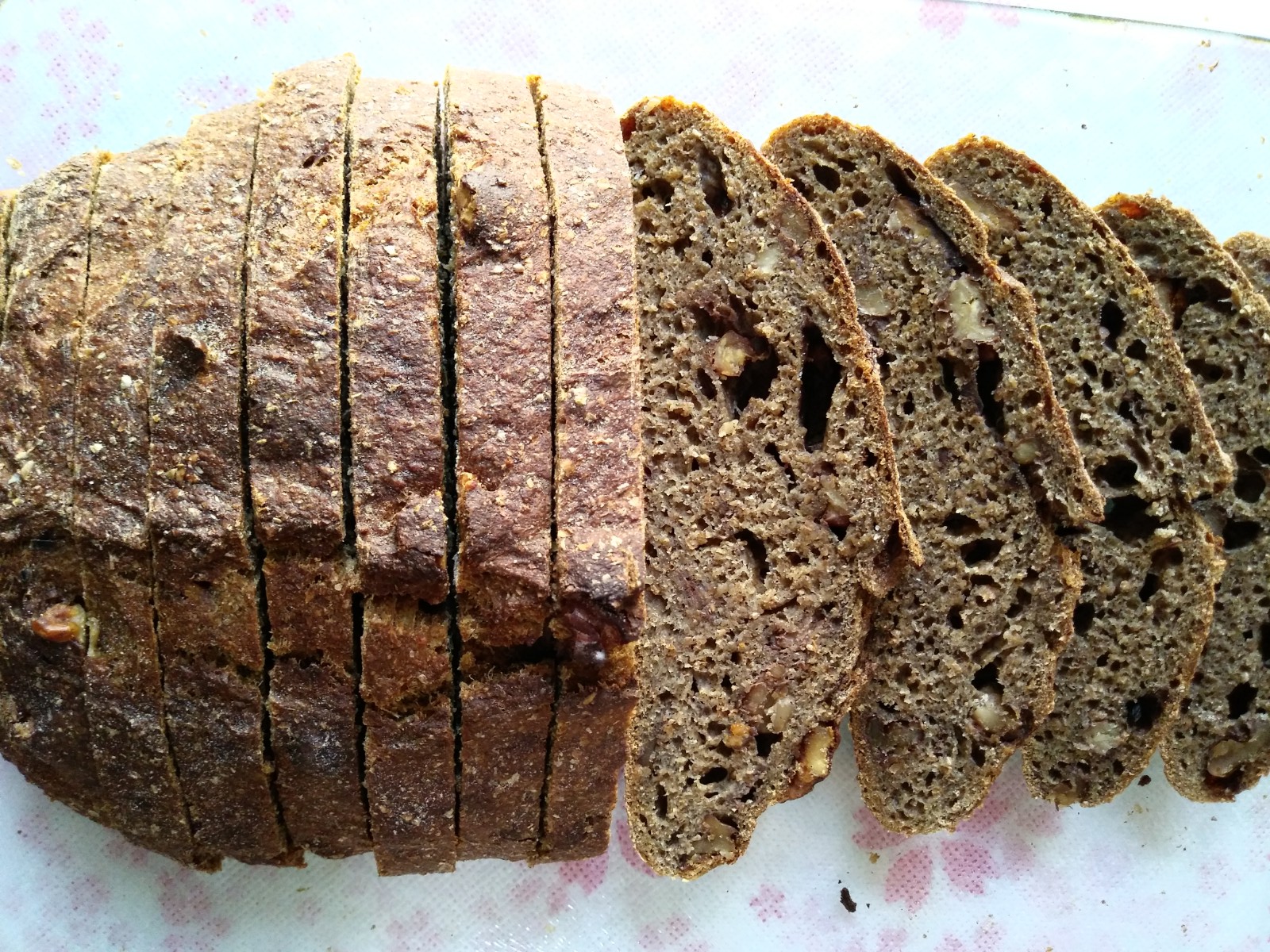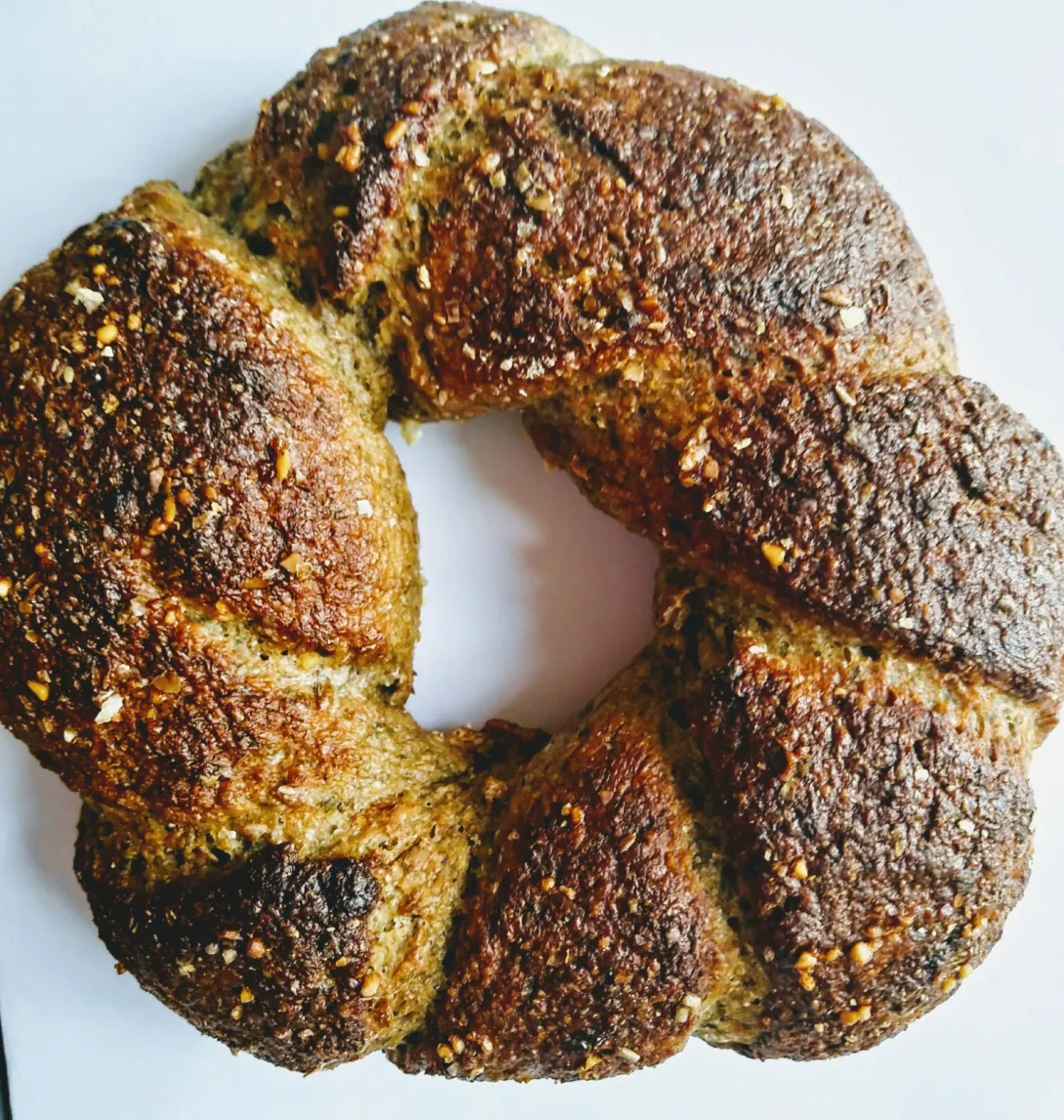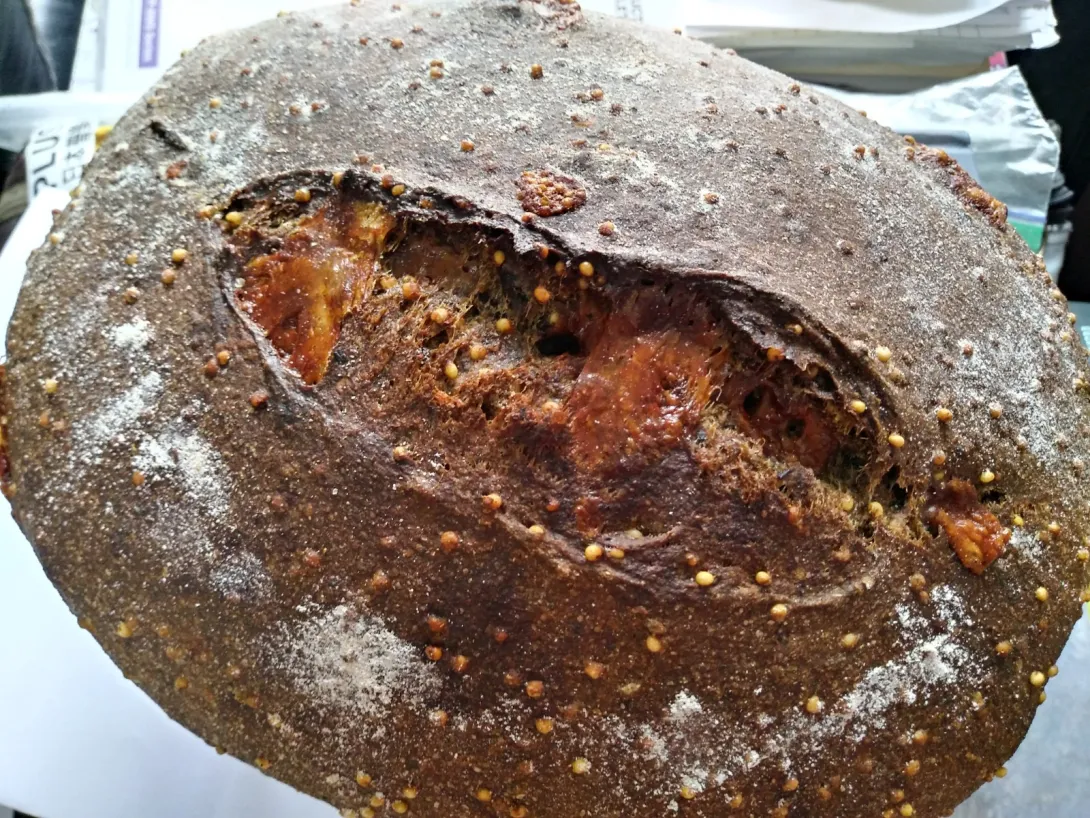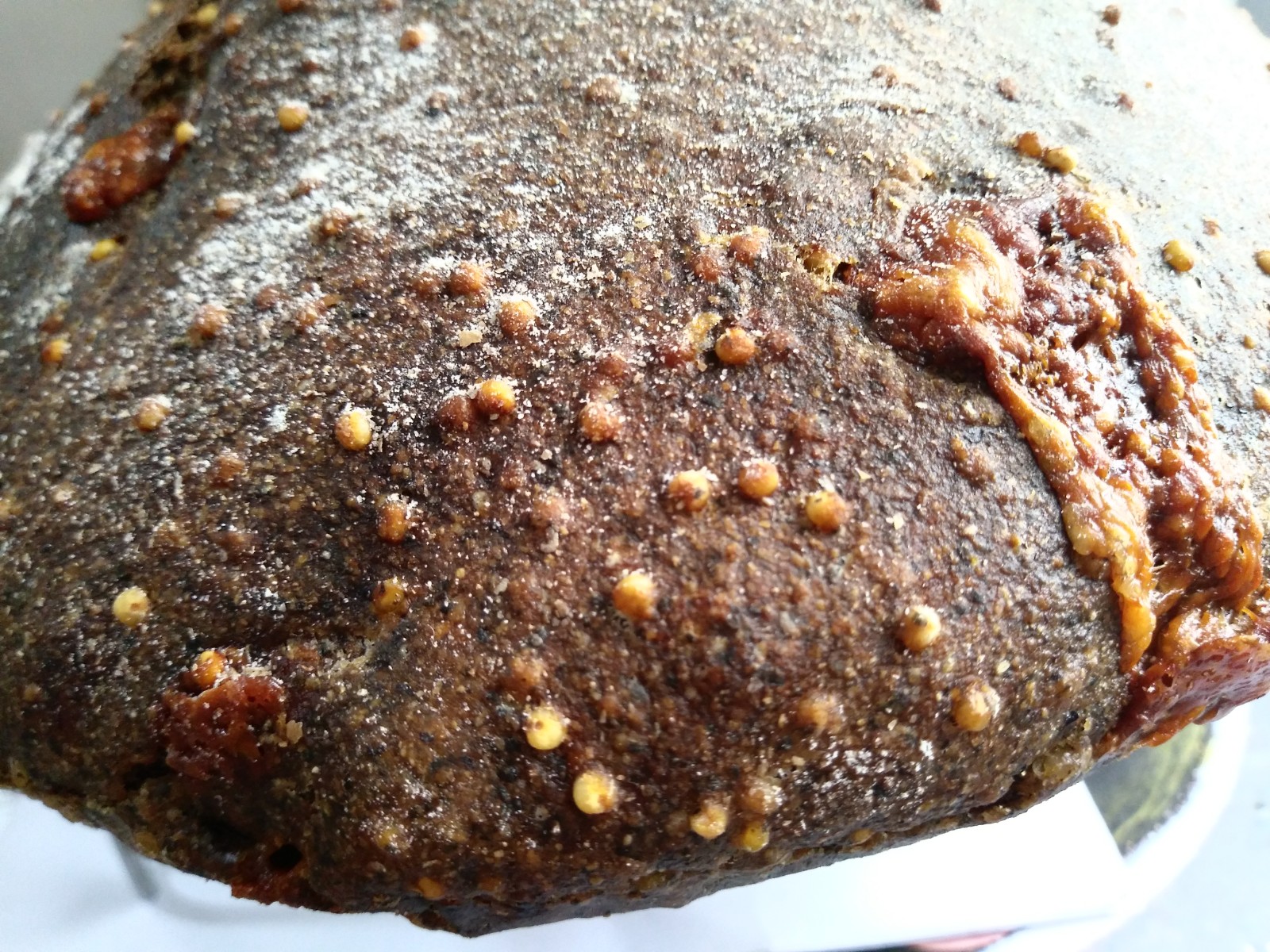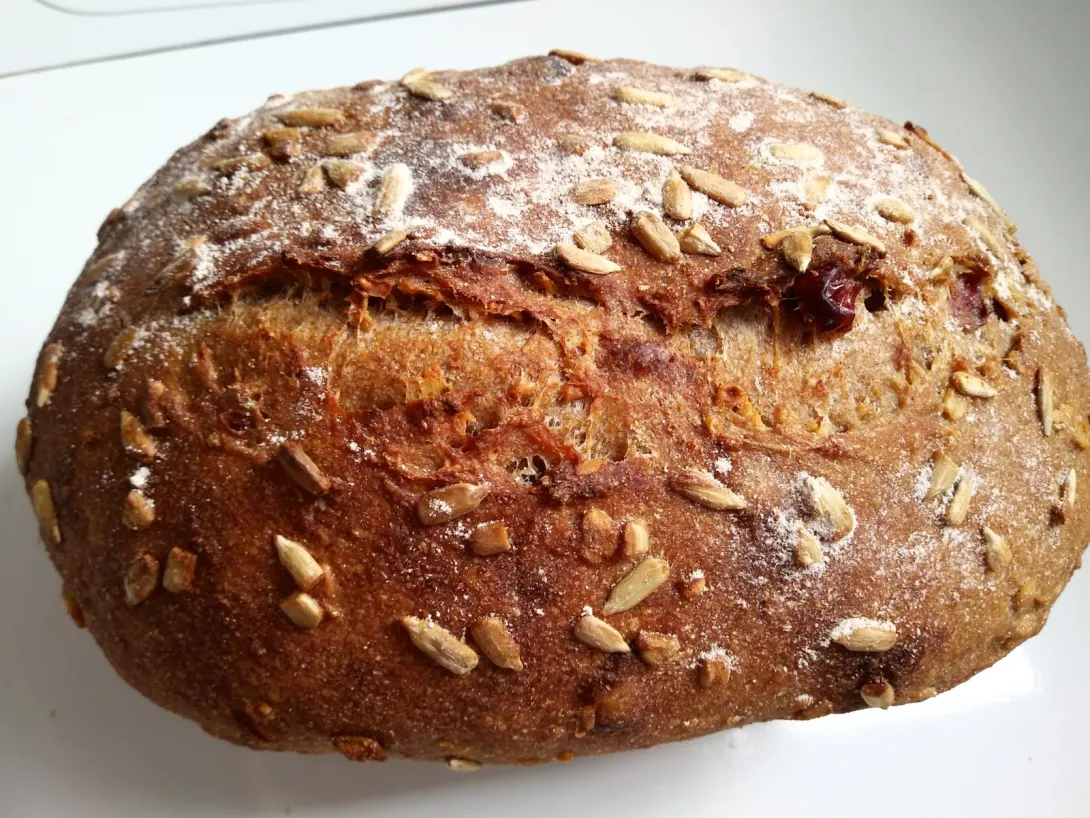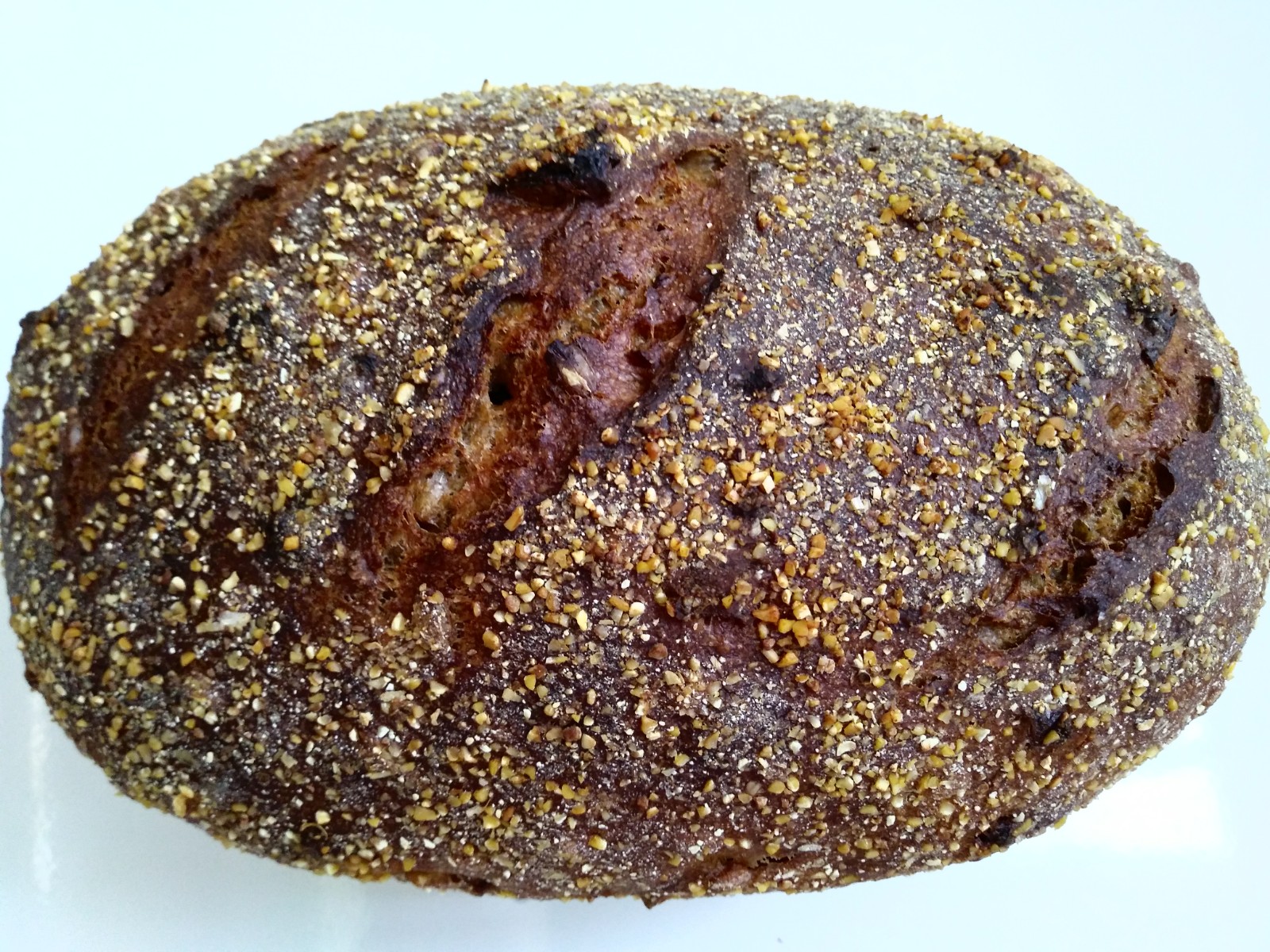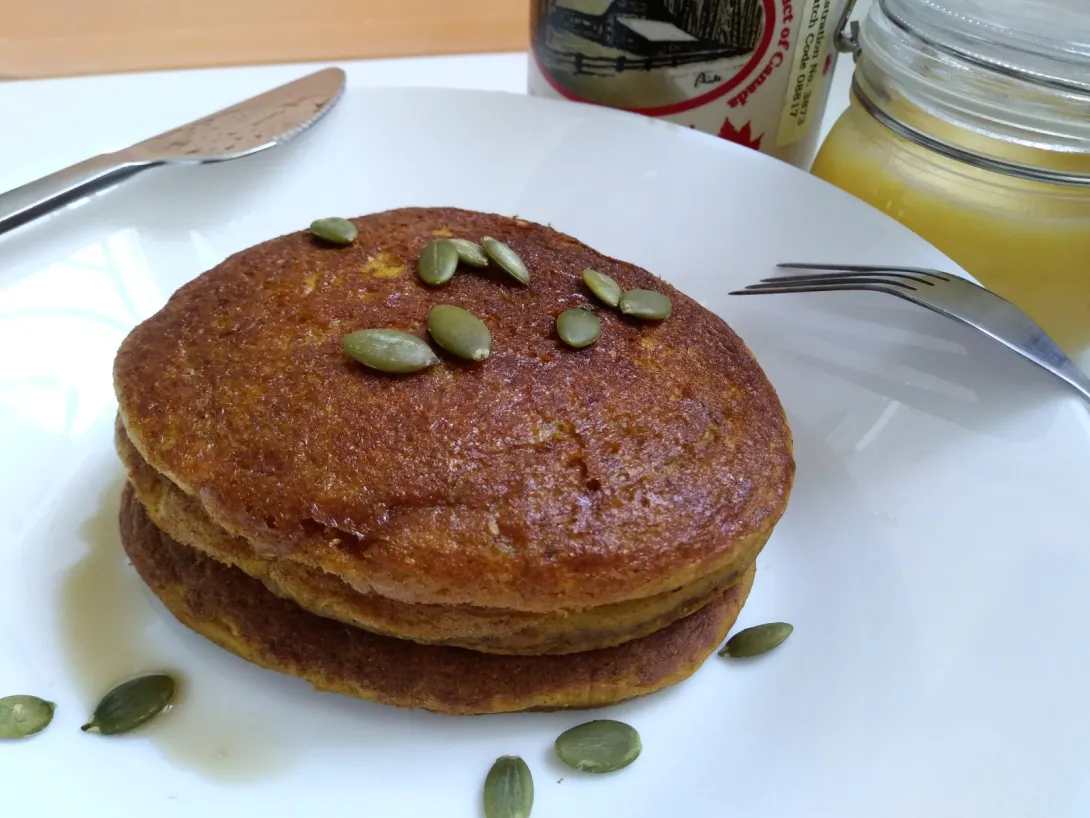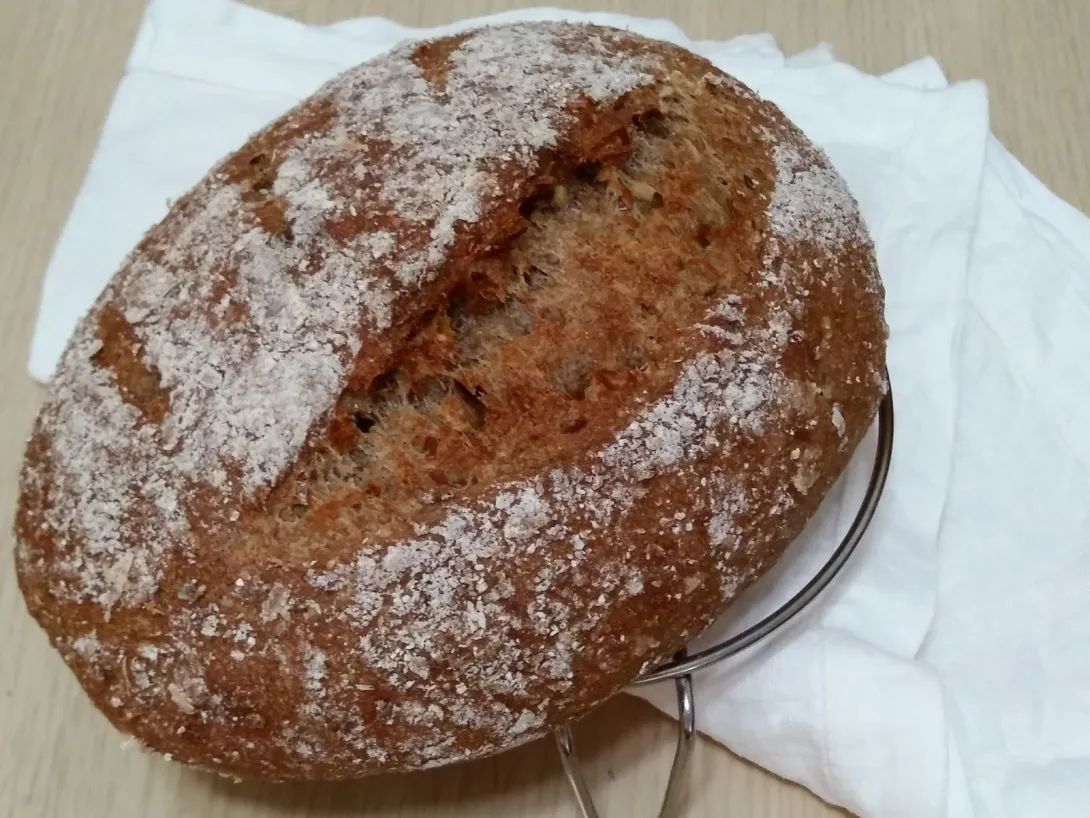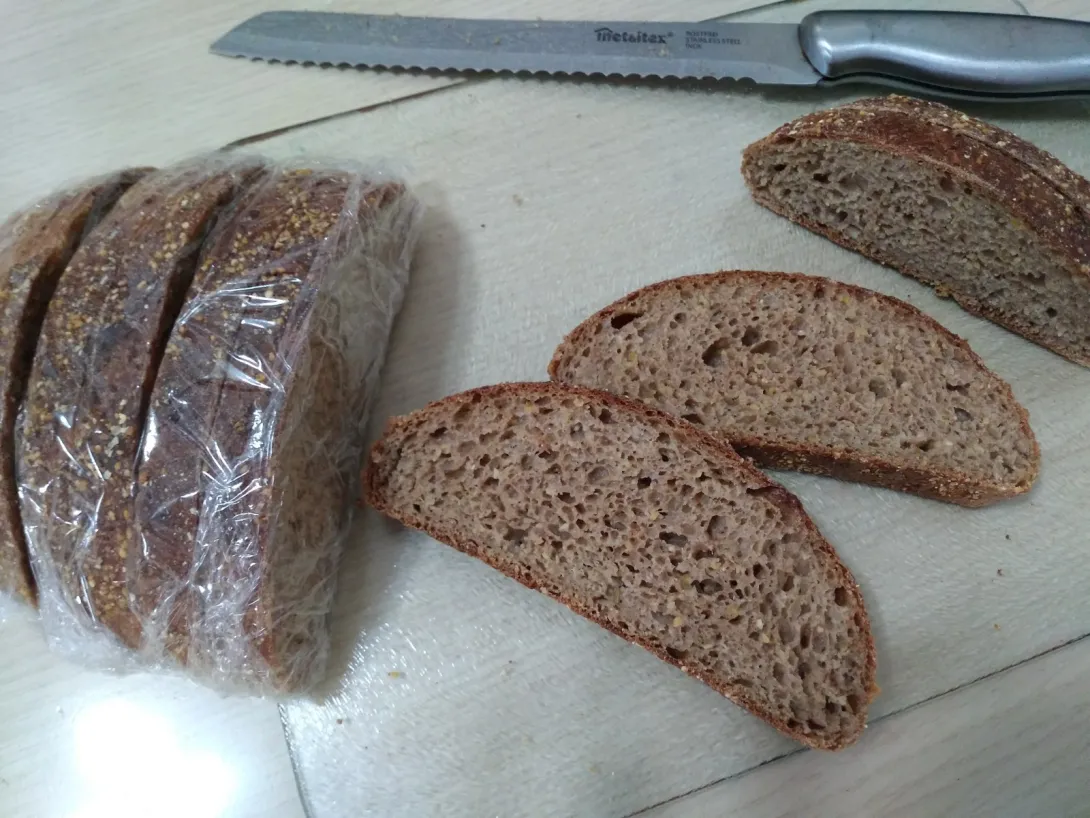For Mom: HK Style Coconut Bun with Tang Zhong and Sourdough
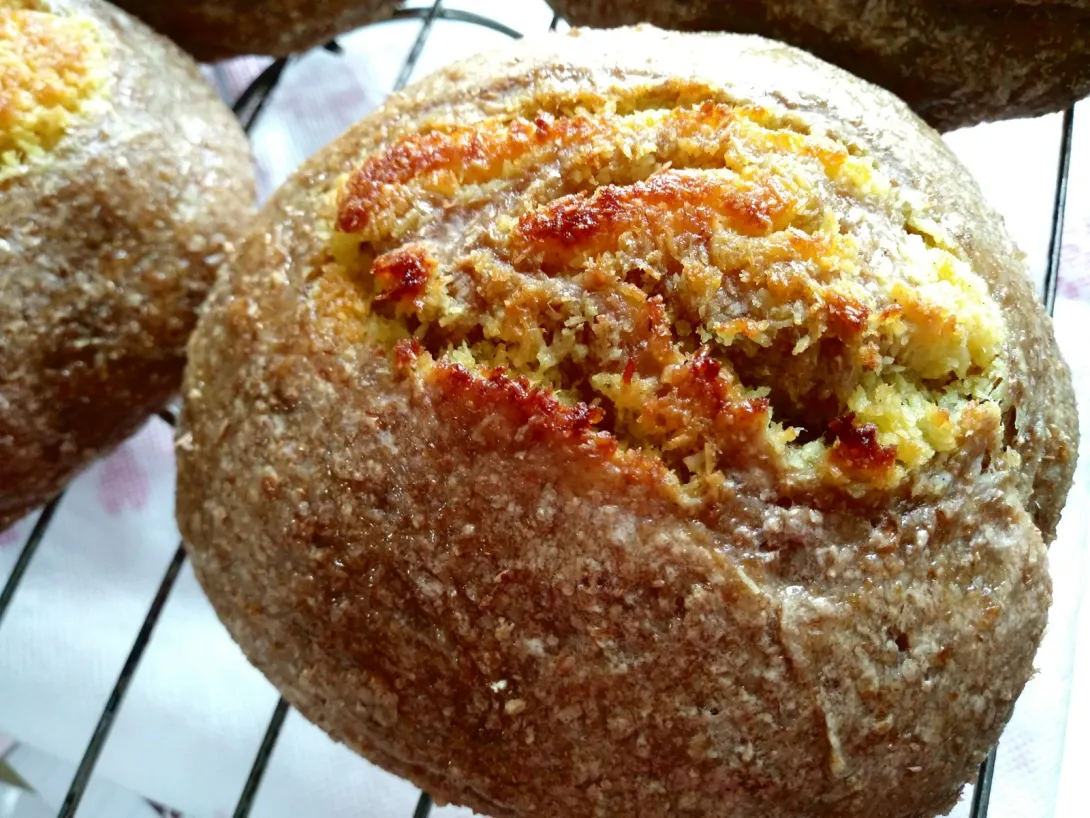
I feel like I should share a HK style bread recipe on this site as someone from HK so when my mom requested some coconut buns, I decided to make it immediately. This is a kind of very typical and popular enriched bread in HK and though I only crave it at very rare occasions, my mom adores it wholeheartedly. I modified the traditional recipe by nixing butter and decreasing sugar in the dough while adding sourdough and tang zhong for flavour and tenderness respectively. An egg is skipped in the filling and condensed milk replaced the sugar.
